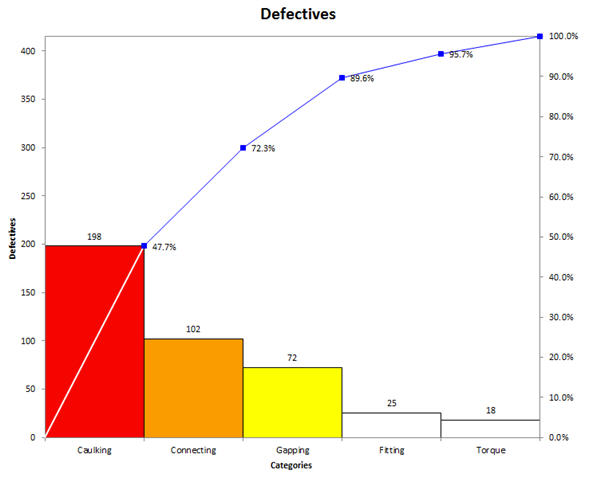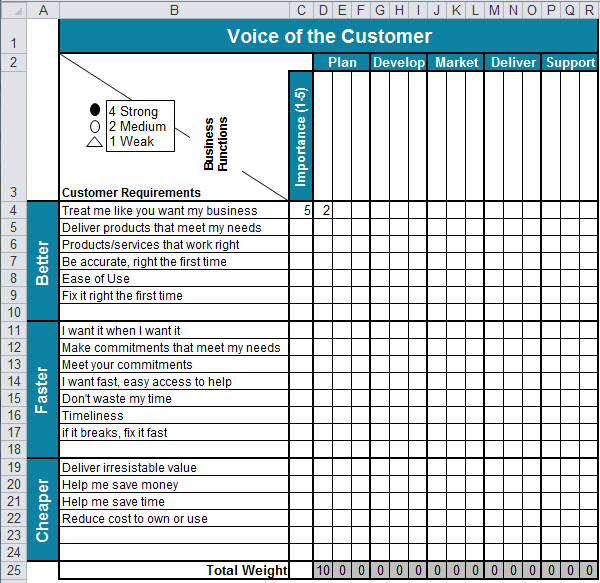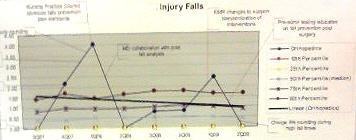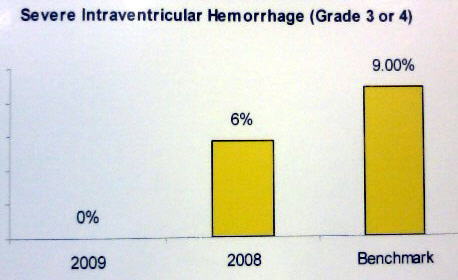Home »
Blog » Six Sigma » Page 24
Improvement Insights Blog
Posts tagged "Six Sigma"
I first learned how to draw Pareto charts by hand using engineering paper if you can believe it. Our trainers were very specific about how they were to be drawn. One of the earliest references I can find is Kaoru Ishikawa’s Guide to Quality Control. Here’s the correct way to draw a Pareto chart using data from Ishikawa’s book:

The bars should be touching and the cumulative percentage line should go from corner to corner of the first bar.
Unfortunately, most Pareto charts drawn by computer look like the following one, bars not touching and cumulative line running out of the center of the top of the first bar.
Continue Reading "The Correct Way to Draw a Pareto Chart"
Posted by Jay Arthur in QI Macros, Six Sigma.
Customers invariably want three things from any supplier; they want you to be better, faster and cheaper that your competition and your past performance. It’s vital to find out what they want. Sometimes it’s as easy as asking: “What can we do better?” and then listening carefully to the response.
One way to figure out what customers want is to develop a voice of the customer (VOC) diagram and keep it updated.

Along the left-hand side are the customer’s requirements for better, faster and cheaper. The goal is to capture exactly what they say in their language. Then translate what they say into business changes that deliver on those requirements.
Continue Reading "What Do Customers Want?"
Posted by Jay Arthur in QI Macros, Six Sigma.
I have found that a high number of people have a fear of math. They seem to think that you are either born with math skills or you aren’t.
In the Jan/Feb 2016 Scientific American Mind, author Carol Dweck reviews the most recent research into The Remarkable Reach of Growth Mind-Sets.
One study by Kathy Liu Sun found that middle school math teachers that embraced growth mind-set but did not back it up with growth mind-set teaching methods such as emphasizing underlying concepts, giving feedback and giving students a chance to revise and resubmit their work caused their students to develop a fixed mind-set.
Continue Reading "Is a Fear of Math Stopping Your Six Sigma Projects?"
Posted by Jay Arthur in QI Macros, Six Sigma.
For many years, I’ve been endlessly annoyed by the mistakes and errors of every service and product business I use. From crappy cell phone service to mistakes on restaurant bills. I have hesitated to write about these experiences because it seemed too much like whining, but my daughter Tina introduced me to the concept of the “Burnt Toast Society.”
Burnt Toasters will eat burnt toast at a restaurant rather than send it back. I think American consumers put up with too much mediocrity. So I have decided to start complaining online about every burnt toast experience.
I recently flew back on Frontier Airlines from the Institute for Healthcare Improvement (IHI) conference in Orlando.
Continue Reading "The Burnt Toast Society"
Posted by Jay Arthur in Six Sigma.
At the ASQ Lean Six Sigma Conference, the QI Macros booth was right next to my biggest competitor–the big dog in the market (you know who they are). A guy comes up to me and says: “We bought 150 copies of their product (pointing to the booth next to me) and it was really expensive. I asked our Green Belts if they were using it and they said No, it’s too hard to use. What are they using; they said Excel.” He went on to say: “I’m thinking about getting the QI Macros because everyone is comfortable with Excel.”
And he wasn’t the only attendee who complained about the same issues: costs too much and too hard to use.
Continue Reading "Complex Statistical Software–a Barrier to Six Sigma"
Posted by Jay Arthur in QI Macros, Six Sigma.
The April, 2014 Harvard Business Review has an article about creating a culture of quality. The authors found that a culture of quality will save $13,400 per employee per year. Surveyed participants also said it takes two hours to fix a mistake. Joseph Juran often said that companies lose a quarter (25%) of their revenue finding and fixing mistakes and errors, so this gives us a benchmark and a reason to embrace quality.
“Companies that take a grassroots, peer-driven approach develop a culture of quality. Traditional strategies have little effect.”
Four Factors that Drive Quality
- Leadership – As Deming said: “The aim of superision should be the help people and machines and gadgets do a better job.
Continue Reading "Creating a Culture of Quality"
Posted by Jay Arthur in Lean, Manufacturing, Service, Six Sigma.
A QI Macros customer recently asked: ” What is a reasonable and productive ratio of Lean or Six Sigma expert (LSSBB, for example) to staff for a healthcare organization that is starting the journey?”
The general consensus I can find online about Six Sigma belts/employees is:
1 BB/100 employees
3 GB/100 employees
I think these numbers are designed to keep Six Sigma training companies in business.
Depending on the size of a Medical center, you could use one BB and some GBs to get started. You can’t fix everything all at once, so one BB ramrodding a handful of GBs to solve key problems would be a good start.
Continue Reading "How Many Green and Black Belts Do You Need?"
Posted by Jay Arthur in Lean, Service, Six Sigma.
In a matter of months, an NC dermatology group boosted insurance coding accuracy saving $65,000.
http://www.msochealth.com/lean-six-sigma-dermatology-practice/
While most of the healthcare quality focus is on hospitals, there’s a huge opportunity to make doctor’s offices more effective and efficient. In this case, better coding results in faster payment of insurance claims. Offices can use Lean to reduce patient wait times and increase volume resulting in more revenue and better patient care.
Continue Reading "Dermatology Group Boosts Coding Accuracy from 65.4% to 91.7%"
Posted by Jay Arthur in Lean, Service, Six Sigma.
Last week, we exhibited at the Magnet conference for nursing quality. Every healthcare quality conference has posters about improvement projects: Magnet, NAHQ, and IHI. What struck me about these posters was the shortage of quality tools like control charts, pareto charts and fishbone diagrams. Those posters using charts often used the incorrect type of chart for the data.
Here’s an example. This chart has so many lines on it, how can you tell what story they are trying to tell?

Here’s an example using a bar chart (instead of a line graph) and the dates are in reverse order:

Here’s another bar chart with the dates in the correct order, but again, time series charts like this one should be shown as a line, run or control chart.
Continue Reading "Magnet Improvement Posters"
Posted by Jay Arthur in Six Sigma.
After the recent terrorist attempt on Northwest Airlines Flight 253, some zealous, knee-jerk root cause analysis led to simple, easy-to-understand, wrong-headed countermeasures: passengers shouldn’t be able to get up during the last hour of any flight, anywhere.
Punishing millions of passengers to protect against a few extremists is a bad countermeasure stemming from bad root cause analysis. Random screenings of elderly women who have had knee replacement surgery or young children, a sampling technique, also seems to be silly.
Root cause analysis should get to the root of the problem: Why was a known extremist allowed to board any flight, anywhere?
Continue Reading "Bad Root Cause Analysis and Countermeasures"
Posted by Jay Arthur in Six Sigma.






